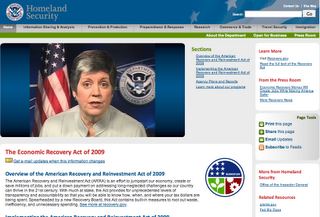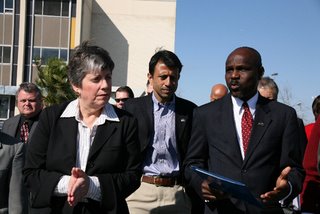
Today the Department took a major step forward to advance one of President Obama's most important goals – improving efficiency and transparency across the Federal government.
Efficiency is essential to effective governance. It helps reduce costs and ensure taxpayer money isn’t wasted. It improves performance and customer satisfaction. And it strengthens employee morale.
Over the next 120 days, we will begin implementing nearly two dozen initiatives to trim costs, streamline operations, eliminate duplication, and better manage resources across the Department.
This effort is the result of a comprehensive assessment by our Efficiency Review team, which worked with DHS components, offices, and employees to identify more than 700 initiatives – some immediate, some long-term – to improve efficiency and transparency.
Among the immediate changes we will make over the next 30 days:
- Eliminating all non-mission critical travel for employees and maximizing our use of conference calls and web-based training and meetings;
- Reducing subscriptions to professional publications and newspapers to lower costs and avoid duplication;
- Eliminating printing and distribution of all reports and documents that can be sent electronically or posted on-line.
Over the next 30 days, we will also begin using purchasing agreements to substantially save on office supplies. This may sound like a small matter, but by leveraging the Department's collective buying power, we can save up to $52 million on office supplies over the next five years.
We're also going to take action to improve how we track and monitor fuel usage for our vehicles. Over the next 60 days, we will begin implementing a new electronic tracking system that will help increase alternative fuel usage; guard against waste, fraud, and abuse; and optimize how we manage our fleet.
In addition, we will begin acquiring hybrid and alternative fuel vehicles over the next 120 days. We expect a 30 percent increase in fuel efficiency in large vehicles, and even greater efficiency in smaller vehicles as a result of this change.
To become more energy efficient, we will also begin implementing energy efficiencies at DHS offices across the country. Over the next 120 days, we will initiate a process to identify and move toward renewable energy technology and greater energy conservation, with a goal of saving $3 million per year.
Over the next 60 days, we will also implement a process to purchase computer software licenses as a single Department – as opposed to individual agencies. As a result, we expect to save over $47 million per year and $283 million over the next six years.
Finally, we’re going to take steps to streamline employee training and orientations, and reduce costs and backlogs associated with background checks for new employees.
This is just the beginning. In the coming months, we’ll announce even more initiatives to improve efficiency. I look forward to keeping you updated as we make these changes, which will result in a stronger, more effective DHS.
Janet Napolitano
Labels: About the Department, efficiency



 Recovery.gov reflects the President’s commitment to bring a new level of transparency and openness to government as we work to strengthen our economy. That is a commitment I share for our Department – and the reason we’ve created www.dhs.gov/recovery.
Recovery.gov reflects the President’s commitment to bring a new level of transparency and openness to government as we work to strengthen our economy. That is a commitment I share for our Department – and the reason we’ve created www.dhs.gov/recovery. 


